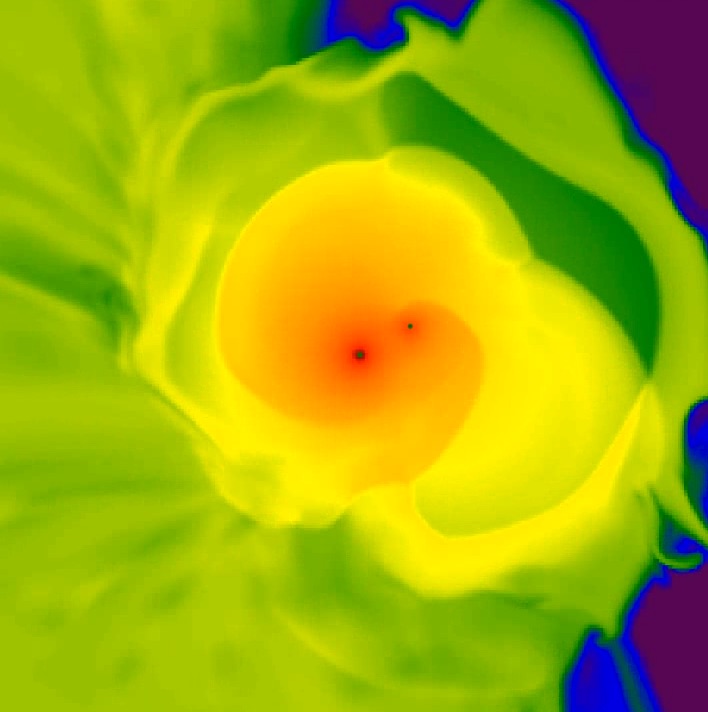Common Envelope Evolution |
|
|
Common Envelopes (CE) are thought to form when unstable mass transfer from
an evolving primary onto a compact companion, results in the primary's
envelope engulfing both stars. During the ensuing spiral-down phase, energy is transfered
into the envelope, resulting in its ejection and in a much reduced
binary period (Paczynski 1976). The CE mechanism explains the existence
of evolved short-period binaries, such as novae, dwarf novae, the
progenitors of type Ia supernovae,
low-mass X-ray binaries, as well as scores of other binary systems containing
all combinations of white dwarfs, neutron stars and black holes.
In addition to these classes, a
large number of evolved and un-evolved, apparently single, stars are increasingly revealing close
faint companions including planets.
Now more than ever we need a complete and clear description
of the changes induced in stellar evolution by the CE interaction.
On the right we show a density slice from one of the CE simulations of Passy et al. (2012). |

|
|
Below are some of the questions that I am currently tackling with my research. |
|
Are most Planetary Nebulae the result of binary interactions? |
|
Post-AGB H-deficiency & binary mergers |
|
A theoretical approach to Common Envelope interactions |
|
Mass-loss geometry and disks |
|
Blue Straggler stars: stellar collisions & binary mergers |
Last Update: 22 March 2018